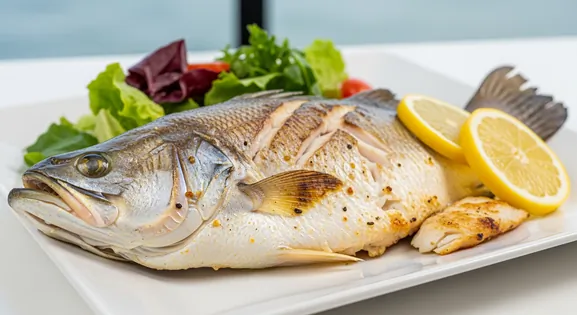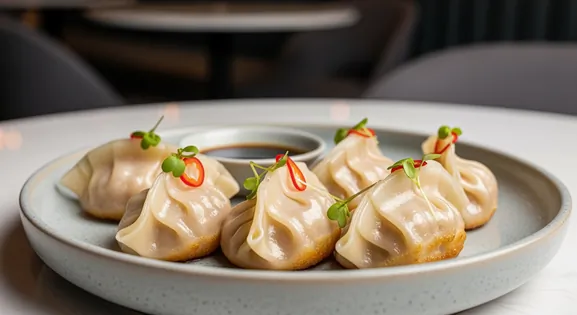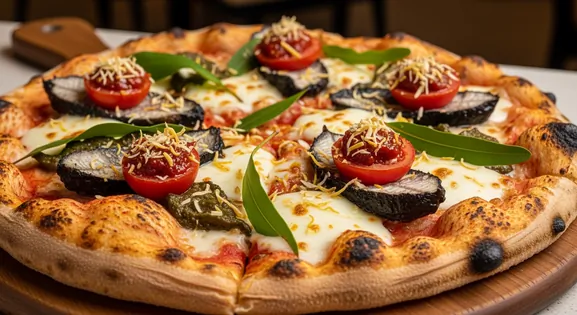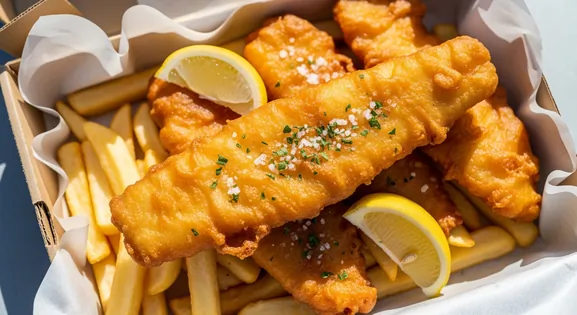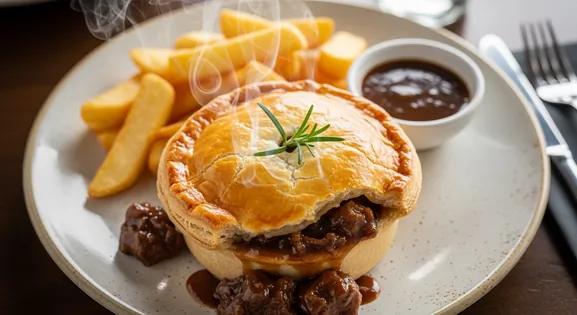Balmain Bugs in Australia: A Complete Food Lover's Guide
Balmain Bugs
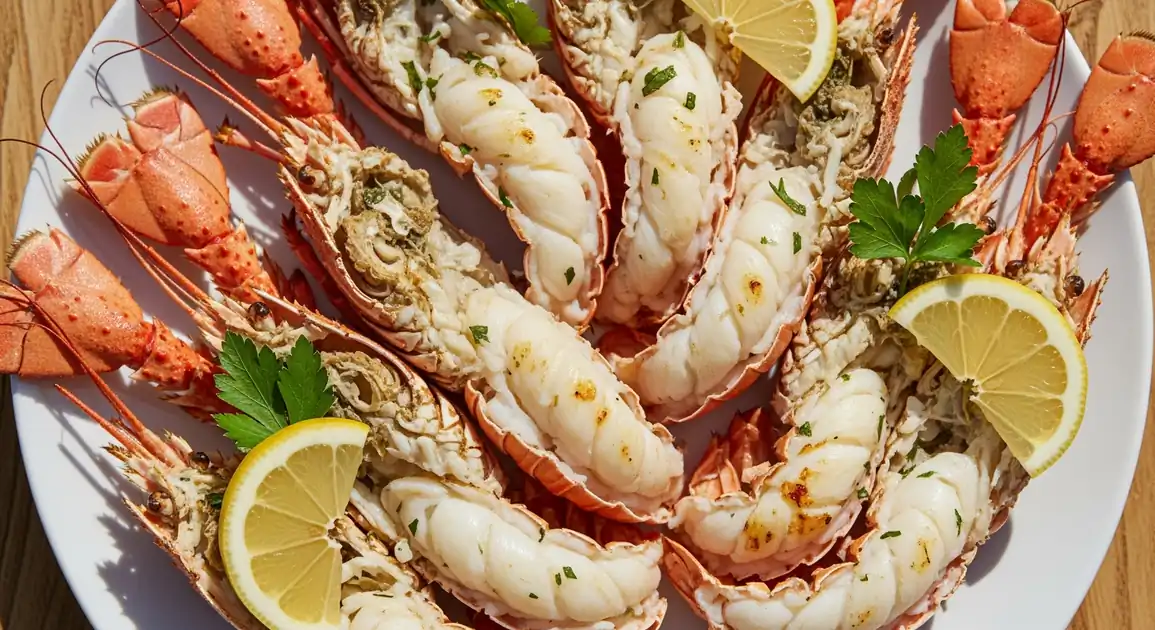
What is Balmain Bugs?
Balmain Bugs (Ibacus peronii) are a distinct Australian slipper lobster known for their sweet, firm, white meat, offering a taste often compared favorably to traditional lobster. They lack large claws and have a characteristically flattened body with centrally located eyes. Found primarily in southern and eastern Australian waters, they are a popular delicacy in local seafood cuisine.
An Authenticity Checklist
What to Look For
-
Fresh ocean or sea-salt smell
Absence of ammonia, sour, or overly fishy odors indicates freshness. It should smell clean like the sea.
-
Bright, intact shell
Shells should have good color (typically reddish-brown/orange) and not be cracked or damaged excessively.
-
Firm flesh texture (raw or cooked)
Raw flesh should be slightly translucent and firm. Cooked flesh should be opaque white and firm, not mushy or falling apart.
-
Clear eyes (if visible)
Eyes should look clear and full, not sunken or cloudy.
-
Reputable vendor with proper storage
Ensure the bugs are stored well-chilled on ice at fish markets or handled hygienically in restaurants.
What to avoid
-
Strong ammonia or 'off' smell
This is a clear sign of spoilage and the bug should not be purchased or consumed.
-
Dull, discolored, or damaged shells
May indicate the bug is old or has been handled poorly.
-
Soft, mushy, or slimy flesh
Indicates poor quality or spoilage. Fresh bug flesh should be firm.
-
Bugs stored improperly (not iced/chilled)
Increases the risk of bacterial growth and spoilage.
-
Undercooked bugs (translucent flesh)
Consuming undercooked shellfish poses a significant health risk.
How to Order Balmain Bugs
Enhancing the Flavor: Classic Pairings
Chardonnay (Unoaked)
Wine
An unoaked or lightly oaked Chardonnay complements the sweet, delicate flavor of Balmain Bugs without overpowering them. Its crisp acidity and subtle fruit notes enhance the seafood's richness.
Fresh Green Salad
Side Dish
A light, crisp green salad with a simple vinaigrette provides a refreshing contrast to the rich seafood. It cleanses the palate and adds a textural element to the meal.
Explore Balmain Bugs in Detail: City Guides
Discover where to find the best Balmain Bugs and learn local tips in these cities:
The Story Behind the Dish
Named after Balmain, a harbourside suburb of Sydney, New South Wales, where they were reportedly abundant in the past. While less common in Balmain itself now, the name persists. They have become a recognized feature of Australian seafood offerings, celebrated in restaurants and seafood markets across the country, especially in NSW and Queensland.
How It Is Traditionally Made
Preparation focuses on highlighting the bug's natural sweetness. Common methods include grilling, barbecuing, steaming, or boiling. They are almost always split longitudinally before cooking. Quick cooking is essential to prevent toughness. Popular flavor pairings include garlic butter, lemon, chili, ginger, and fresh herbs like parsley.
Key Ingredients of Balmain Bugs
Balmain Bug Meat
The star of the dish, this succulent white meat is found within the tail and body of the slipper lobster. It has a delicate, sweet flavor and firm texture, often compared to rock lobster or prawns.
Quality indicator: Quality meat is opaque white, firm, and has a fresh, sweet ocean aroma, not fishy or mushy.
Garlic
Fresh garlic, finely minced or crushed, is a common aromatic used to enhance the natural sweetness of the bug meat. It's often sautéed in butter or oil before the bugs are added.
Quality indicator: Look for firm, unsprouted cloves with a pungent aroma, indicating freshness and strong flavor.
Lemon
Fresh lemon wedges or juice are almost universally served with Balmain Bugs. The citrus brightens the rich flavor of the seafood and adds a refreshing tang, cutting through any richness.
Quality indicator: Choose firm, brightly colored lemons that feel heavy for their size, indicating high juice content.
Local Balmain Bugs Variations in Australia
Grilled Balmain Bugs with Garlic Butter
Split bugs grilled and basted with melted garlic butter, often finished with parsley and lemon.
Steamed Balmain Bugs with Ginger and Shallots
A simple preparation highlighting the natural sweetness, steamed with aromatic ginger and spring onions (shallots).
BBQ Balmain Bugs
Cooked on a barbecue, often with a simple marinade or glaze, imparting a slight smoky flavor.
Balmain Bug Mornay
A richer, classic preparation where the cooked bug meat is topped with a creamy cheese sauce (Mornay) and gratinated.
Balmain Bugs in Pasta or Risotto
Cooked bug meat incorporated into pasta dishes (like linguine) or creamy risottos, often with white wine, garlic, and herbs.
Dietary Information
Dietary Information
Important Note for Travelers: Your safety is our priority. Below are the common allergens associated with the traditional preparation of this dish. However, recipes and ingredients can vary significantly between establishments. Always confirm all ingredients directly with the food vendor before ordering, especially if you have a severe allergy.
Potential Allergens
Dietary Suitability
Frequently Asked Questions about Balmain Bugs
What are Balmain Bugs?
Balmain Bugs (Ibacus peronii) are a species of slipper lobster found in Australian waters, particularly the south-east. They have flattened bodies, no large claws, and distinctive antennae placement near the centre. They are prized for their firm, white, sweet-tasting meat, similar to lobster.
How do you eat Balmain Bugs?
They are typically cooked by grilling, steaming, barbecuing, or boiling. The bug is often split lengthwise, cleaned, and cooked quickly. The sweet flesh is then extracted from the tail shell, often served simply with lemon, butter, or garlic sauce. Overcooking should be avoided as it makes the flesh tough.
How to ensure quality when eating Balmain Bugs?
Balmain Bugs are a quality choice when sourced fresh and prepared correctly. Look for a clean sea smell (not ammonia-like), bright shells, and firm texture. Ensure they are cooked thoroughly until the flesh is opaque white. Always purchase from reputable seafood suppliers or restaurants for the best experience.
What's the difference between Balmain Bugs and Moreton Bay Bugs?
Both are slipper lobsters. Balmain Bugs (Ibacus peronii) have their eyes located close together near the center of their head, while Moreton Bay Bugs (Thenus orientalis) have eyes set wide apart at the edges of their shell. Taste is similar, though some find Moreton Bay Bugs slightly sweeter.
Are Balmain Bugs expensive?
They are generally considered a premium seafood item, often priced similarly to lobster per kilogram, but can be more affordable than large rock lobsters. Prices fluctuate based on season, size, and availability. Expect restaurant prices to be significantly higher than market prices.
When are Balmain Bugs in season?
Balmain Bugs are available year-round, but peak season is typically during the warmer months, from summer through autumn (December to May) in Australia, when they are often more abundant and potentially lower in price.
Expert How-To Guides about Balmain Bugs
How to Choose Fresh Balmain Bugs
Learn to identify the freshest Balmain Bugs by assessing their smell, appearance, and texture, ensuring you select high-quality seafood for optimal taste and enjoyment.
- Smell: Look for a fresh, clean ocean scent. Avoid any hint of ammonia or strong fishiness.
- Appearance: Shells should be bright and intact. The flesh (if visible after splitting) should look firm and slightly translucent when raw.
- Texture: If possible, gently press the tail flesh; it should feel firm, not mushy.
- Source: Buy from reputable fish markets or suppliers known for fresh seafood. Check storage conditions (iced properly).
Simple Ways to Prepare Balmain Bugs
Master basic cooking methods like grilling, steaming, and boiling to perfectly prepare Balmain Bugs, highlighting their natural sweetness and delicate texture for a delicious meal.
- Splitting: Place the bug shell-side up. Use a large sharp knife to cut firmly down the center from head to tail.
- Cleaning: Remove the digestive tract (vein) running down the tail meat. Rinse gently under cold water.
- Grilling/BBQ: Brush flesh side with oil or garlic butter. Grill flesh-side down for 2-3 minutes, then flip and cook shell-side for another 3-5 minutes until flesh is opaque.
- Steaming: Steam over boiling water for 5-8 minutes depending on size, until flesh is opaque white. Often steamed with ginger and shallots.
- Boiling: Boil in salted water for 4-7 minutes. Plunge into ice water to stop cooking.
Quality Handling and Cooking of Balmain Bugs
Understand essential practices for Balmain Bugs, including proper storage, preventing cross-contamination, and ensuring thorough cooking to enjoy this delicacy with confidence.
- Keep Cold: Store raw bugs properly iced or refrigerated below 4°C (40°F) and use within 1-2 days.
- Avoid Cross-Contamination: Use separate cutting boards and utensils for raw seafood and other foods. Wash hands thoroughly before and after handling.
- Cook Thoroughly: Ensure the flesh turns from translucent to opaque white and is firm. Internal temperature should reach 63°C (145°F).
- Serve Promptly: Serve cooked bugs immediately or refrigerate promptly if not eating right away.
Our Commitment to Quality
At Tasteplorers, our mission is to provide the most accurate and useful travel information in the world. To achieve this, all content on this site is created through our unique editorial framework. We utilize leading AI research tools, guided by our proprietary prompts, and a multi-stage validation process. This entire system is overseen by our editorial team to ensure everything we publish meets our high standards for accuracy, cultural nuance, and practical value for travelers.
Learn more about our Editorial Process and our Mission.
Explore regions
Europe
Discover Europe's diverse culinary landscape, from Mediterranean flavors to hearty Alpine fare. Learn to navigate markets, decode menus, and eat like a local.
Latin America & Caribbean
Discover the vibrant cuisines of Latin America & the Caribbean. Our expert guide covers everything from Mexican street food to Peruvian ceviche and market tips.
Oceania
Explore Oceania's diverse food scene. Learn about Polynesian earth ovens, Fijian feasts, and the vibrant café culture of Australia and New Zealand.
Southeast Asia
Explore Southeast Asia's diverse food cultures from Thailand to Vietnam. Get expert tips on navigating spice levels, choosing quality vendors, and understanding the rich traditions of the region.
